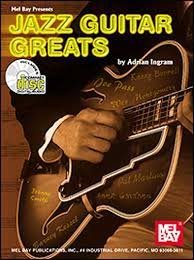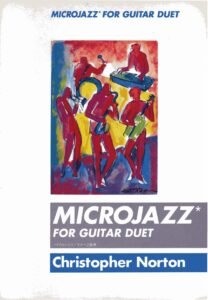Table of Contents:
Les Paul guitar and the contemporary jazz

Lester William Polsfuss, better known as Les Paul, was a guitarist, a pioneer of jazz, who has left his mark on the world of music, not only because of his career and innovation during his career, but because thanks to him and his influence, we now have jazz guitars. But…why is jazz such an unpopular genre?
There are several theories. In fact, it is one of the most beautiful genres, due to its composition and appreciation. However, as in gastronomy, it is an acquired taste. That is to say, if you haven’t listened since you were little, perhaps when you grow up it will seem a little difficult to understand. Which doesn’t mean it’s impossible.
Best Sheet Music download from our Library.
Some genres and styles (not exclusive to jazz) are based on well-established and known patterns and dynamics: specific cadences, progressions, scales, rhythms, instruments, etc. Jazz, due to its freedom, is a somewhat loose concept that tries to label improvised performances that try to differentiate those common conventions.
As you enter the realm of the uncommon, things start to sound strange. Does that mean you need theory to understand it? It all depends on what your goal is and how you determine it. What does it really mean to fully appreciate? If you want to analyze a performance and study what is happening, why and how, then music theory will be useful. But if you just want to listen and enjoy, music theory is not important.

What then is it that makes jazz more difficult to understand than pop? Many genres and styles are based on patterns that are familiar to listeners. Pop is based on very simple patterns that are heard everywhere, so one learns to recognize and enjoy it from a young age.
If you’ve ever been to a jazz concert, you may have thought that the entire event was chaotic. Not really. The musicians focus on playing different harmonies and rhythms, yes, but they stick to a structure that synthesizes the entire piece. The next time you go to another concert, jam session or jam session, pay attention to the pauses and jams: you will see that everyone converges on these places. But you have to pay attention with intention, otherwise you may not notice it.
What we can say about jazz is that it resembles an open window to the musician’s mind. It’s your stream of consciousness rendered in real time in music. If you can tune into this transmission (and the only thing required to do this is to be completely calm and relaxed) you may even be able to read your emotions and thoughts.
One thing that jazz players like Les Paul almost always free themselves from is harmonic structure. While earlier jazz had increasingly complex chord structures that are heavily rooted in music theory concepts such as cadences and resolution, free jazz completely removed the restrictions of chord structure.
Many free jazz groups lacked polyphonic instruments such as the piano or guitar. For most jazz pianists, chord progressions and the interaction between each chord are their stock-in-trade. This creates a structure that would limit where the soloists can go with their melody. To avoid this, they simply leave the piano completely.
Remember that far from needing a background in music theory to “understand” music, the goal was to free performers from those types of restrictions. When listening to free jazz you should focus on the expression of the jazz players but put less emphasis on what they are playing and more on how they are creating it.
On the other hand, it may seem that understanding jazz is difficult, but the real challenge is overcoming the harsh and often cacophonous sound that results from the removal of the structures we are accustomed to hearing. It requires letting go of your expectations and listening to the performances.
There is a balancing process here. People don’t like jazz because it violates their expectations. Jazz musicians don’t stick to the public because, since everyone knows that people don’t like jazz, no one becomes a jazz musician. It is already difficult to make a living from music…now imagine living from a genre that is not known, that is not appreciated, that does not make money.
People are willing to change their musical style to become popular (as opposed to satisfying some purely internal intellectual or aesthetic desire). Most are directed towards rock, hip-hop or pop, of course. Which isn’t completely bad…we’re just running out of quality jazz players like Les Paul.
Jazz musicians seem largely content to facilitate exclusion, and in turn get to enjoy a creative process that is centered exclusively around their own creative interests. Therefore, they sometimes seem very conceited. Wouldn’t you be a little bit like that too if you knew how black holes in space work? Few people know this information.
So, as we can see, there are two currents: one, of people who are not used to jazz, and two, of jazz players who want to continue being part of the private jazz club. Both sides, we must, instead of keeping ourselves excluded from each other, try to include each other. Thus, music would be constant, simple, sublime learning, instead of an endless fight of superiority.
Therefore, if you play jazz or want to try it, you can start by getting your Les Paul guitar, playing greats like him, learning transcriptions, and also allowing both you and those close to you to grow in this genre. Opening minds should never be a restriction.
Please, subscribe to our Library. Thank you!
Les Paul, short bio
Lester William Polsfuss (June 9, 1915 – August 12, 2009), known as Les Paul, was an American jazz, country, and blues guitarist, songwriter, luthier, and inventor. He was one of the pioneers of the solid-body electric guitar, and his prototype, called the Log, served as inspiration for the Gibson Les Paul. Paul taught himself how to play guitar, and while he is mainly known for jazz and popular music, he had an early career in country music.
In the 1950s, he and his wife, singer and guitarist Mary Ford, recorded numerous records, selling millions of copies.
Paul is credited with many recording innovations. His early experiments with overdubbing (also known as sound on sound), delay effects such as tape delay, phasing, and multitrack recording were among the first to attract widespread attention.
His licks, trills, chording sequences, fretting techniques, and timing set him apart from his contemporaries and inspired many guitarists of the present day.
Among his many honors, Paul is one of a handful of artists with a permanent exhibit in the Rock and Roll Hall of Fame.
He is prominently named by the music museum on its website as an “architect” and a “key inductee” with Sam Phillips and Alan Freed. Paul is the only inductee in both the Rock and Roll Hall of Fame and the National Inventors Hall of Fame.
